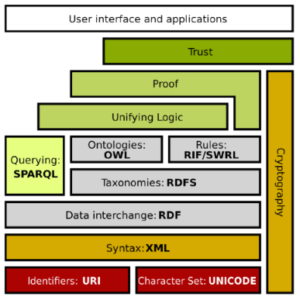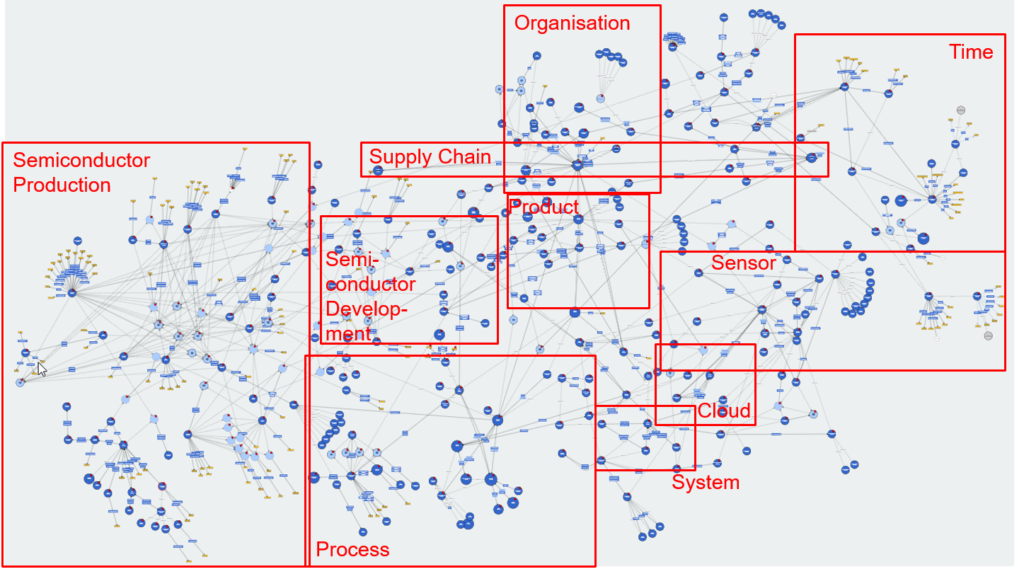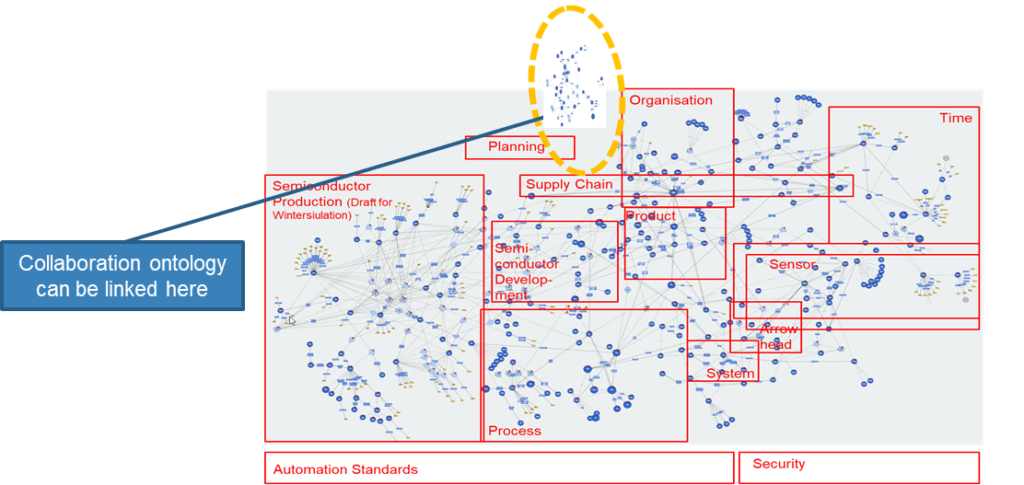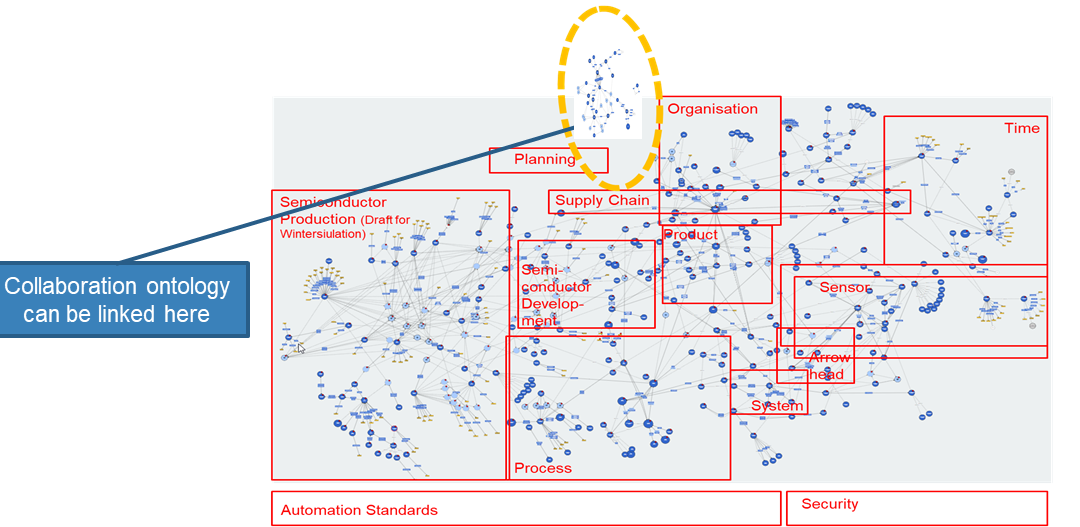Seula Lee, Infineon, Leader WP 7
In today’s digitalized world, human as a user of system and the computer as commanding algorithm have to understand in a similar way to implement new concept. An ontology with semantic web provides this lingua franca. It was introduced to several projects in various industry and now tailored towards the application in semiconductor supply chain, including collaboration improvements.
Infineon Technologies AG investigates the feasibility about collaboration improvements which are derived from other industry, with support of other Safe-DEED partners. To formulate the basis of its implementation, an ontology for collaboration was prepared and linked to the other ontologies in semiconductor supply chain. Semantic web is the technology, which can develop the current World Wide Web system further to reflect the increasing complexity of data system. Its strength lies on the better interaction between human and computer based on machine-understandable and –interpretable possibility.

Figure 1: The semantic web stack (Adapted from Berners-Lee, 2000)
General structure of semantic web is shown in the figure above. Semantic knowledge is represented by a subject, a predicate, and an object. A predicate is the property to relate the subject and the object with an attribute. In this way, the relationship between information is described more explicitly and the misunderstanding can be avoided. Also to link different knowledge or database, semantic web provides a consistent inference via logical rules to enhance the collaboration.
As semiconductor industry consists of numerous production process, the amount of data generated in supply chain is also huge. Ontology-based model was implemented to establish the framework to manage the supply chain system efficiently. The figure below is current version of semiconductor supply chain ontology that Infineon develops together with other manufacturers and companies who use semiconductor in their supply chain. As the structure is visualized and the relation is defined in detailed level, comprehension of the domain knowledge and operational process become faster and uncomplicated.

Figure 2: Digital reference of semiconductor supply chain
Handling the data complexity is one of the biggest focus in safe-DEED project. To secure a collaboration platform, Infineon composed the collaboration ontology as initial work to build the fundamental of the project. It illustrates what is relevant for a specific collaboration concept and how the process should work. By using semantic web, the collaboration partners can have better outcome since the machine understandability is more advanced than current system. The availability to provide the right result at the right timing will be beneficial to increase business profitability and customer satisfaction at the same time. Furthermore, less hassle for the collaboration will occur and digitalized business platform will play a central role in safe-DEED.

Figure 3: Input of collaboration ontology
The collaboration platform will function as the framework for work package 7 in safe-DEED. Synergy with other research partners is also expected by linking the existing database to the ontology.
References
Berners-Lee, Tim (2000): Semantic Web on XML. XML 2000. W3C. Washington DC, USA, 2000. Available online at http://www.w3.org/2000/Talks/1206-xml2k-tbl/slide10-0.html, checked on 12/21/2018.
Lacy, Lee W. (2006): Interchanging Discrete Event Simulation process Interaction Models Using the Web Ontology Language – OWL. Dissertation. University of Central Florida. College of Engineering and Computer Science.
Leite, J. R. Emiliano; Martins, Paulo S.; Ursini, Edson L. (2019): Internet of Things: An Overview of Architecture, Models, Technologies, Protocols and Applications. In Yuzo Iano, Rangel Arthur, Osamu Saotome, Vania Vieira Estrela, Hermes José Loschi (Eds.): Proceedings of the 3rd Brazilian Technology Symposium, vol. 113. Cham: Springer International Publishing, pp. 75–85.


